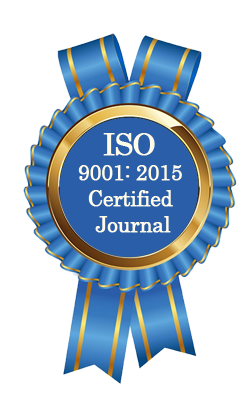| All | Since 2020 | |
| Citation | 105 | 60 |
| h-index | 4 | 4 |
| i10-index | 3 | 2 |
WJAHR Citation 
Login
News & Updation
Best Article Awards
World Journal of Advance Healthcare Research (WJAHR) is giving Best Article Award in every Issue for Best Article and Issue Certificate of Appreciation to the Authors to promote research activity of scholar.
Best Article of current issue
Download Article : Click here
Indexing
Abstract
TRANSESOPHAGEAL ECHOCARDIOGRAPHY BE A ROUTINE WORK UP IN ALL YOUNG STROKES? A TERTIARY CARE CENTRE STUDY
Dr. Kannan Balasubramani MD DM*
ABSTRACT
Introduction: Ischemic stroke is one of the major causes of morbidity and mortality in middle and late years of life. 85% CVA caused by ischemia, out of which 20% of is constituted by cardio embolic stroke. Cardio embolic stroke is defined as non-lacunar stroke with presence of potential cardiac source in the absence of cerebrovascular disease. The availability of new diagnostic techniques especially transoesophageal echocardiography (TEE) has allowed clinicians to identify cardiac source of embolism. This study was undertaken to compare the diagnostic yield of transoesophageal echocardiography with transthoracic echocardiography in the detection of a cardiac source of embolism in patient with cerebral ischemia. Materials And Methods: Stroke patients admitted in medical wards for period of one year were selected for this study. Patients with or without cardiac disease below the age 45 years and patient without any known risk factors for thrombotic stroke were included in the study. Age > 45 years, patient with known risk factors for Atherothrombotic stroke and CT suggestive of haemorrhage were excluded. Both transthoracic echocardiography & transoesophageal echocardiography were done for all patients Results: In 30 patients included in the study transthoracic echocardiography revealed a potential cardiac source of embolism in 25% (4 patients) all of whom had clinical evidence of heart diseases and 14% (2 patients) who had no clinical evidence of heart disease. In addition to the yield by transthoracic echocardiography, transoesophageal echocardiography revealed a potential source of embolism in 56% (9 cases). In patients with clinical evidence of heart disease, cardiac abnormalities additionally detected by transoesophageal echocardiography are 2 cases of LA appendage clot, 6 cases of left atrial spontaneous echo contrast and one case of prosthetic valve dysfunction (which is statistically significant). In patients with no clinical evidence of heart disease, transoesophageal echocardiography detected one case of patent foramen ovale with atrial septal aneurysm. Thus transoesophageal echocardiography is more sensitive than transthoracic echocardiography in detection of potential cardiac source of embolism. Conclusion: TEE is of great value in patients with clinical heart disease in comparison with TTE.In patients without clinical evidence heart disease utility value of TEE was less pronounced, still, TTE can be used as a effective screening tool. We suggest TEE may be advised routinely as stroke evaluation tool especially in the young patients.
[Full Text Article] [Download Certificate]
